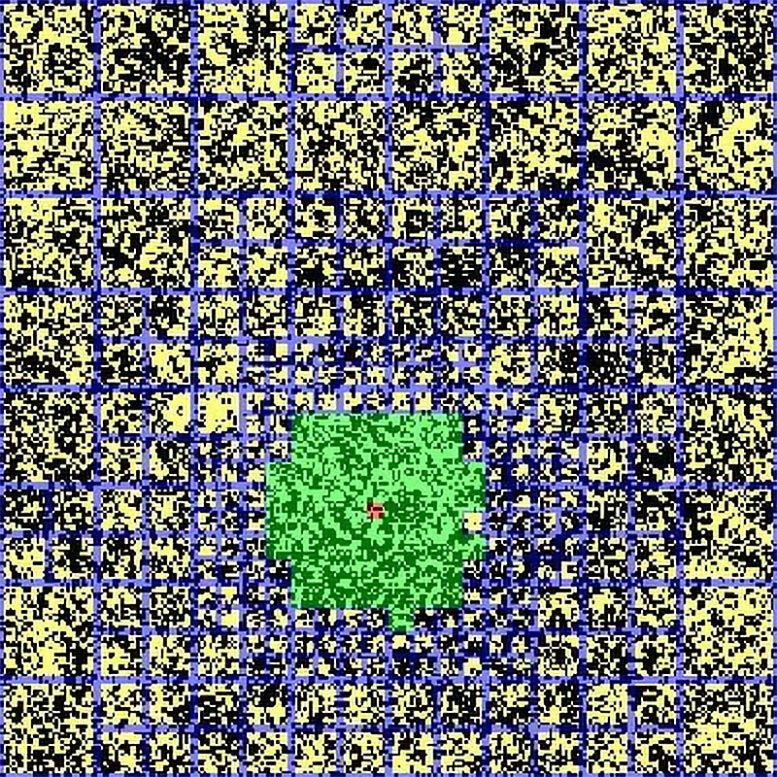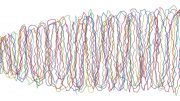
Leipzig University researchers have developed a highly efficient method and algorithm for studying long-range interaction systems. The algorithm dramatically reduces computational time, offering profound insights into nonequilibrium processes. This breakthrough has vast implications for both theoretical research and practical applications.
Researchers develop new algorithm to effectively investigate long-range interacting systems.
Researchers at Leipzig University have developed a highly efficient method to investigate systems with long-range interactions that were previously puzzling to experts. These systems can include gases or solid materials like magnets, wherein atoms interact with not only their immediate neighbors but also entities far beyond.
Professor Wolfhard Janke and his research team utilize Monte Carlo computer simulations for this task. Named after the Monte Carlo casino, this stochastic process generates random system states, from which the desired system properties can be determined. Monte Carlo simulations thus provide profound insights into the physics of phase transitions. The researchers have introduced a novel algorithm that can perform these simulations in mere days, compared to the centuries it would have taken using traditional methods. Their ground-breaking findings have been published in the respected journal Physical Review X.
Equilibrium and Nonequilibrium Processes
A physical system achieves equilibrium when macroscopic properties such as pressure or temperature remain consistent over time. Nonequilibrium processes, however, occur when environmental alterations push a system out of equilibrium, causing it to seek a new equilibrium state. “These processes are increasingly becoming the focus of attention for statistical physicists worldwide. While a large number of studies have analyzed numerous aspects of nonequilibrium processes for systems with short-range interactions, we are only just beginning to understand the role of long-range interactions in such processes,” explains Janke.

Visualization of the process to calculate the new state of the spin (shown in red) of a ferromagnetic system with long-range interactions. The near-field region (green) is treated as for short-range interactions, while in the far-field region (yellow) hierarchical data structures (size of the blue boxes) are used that are adapted to the instantaneous system state. Credit: Institute of Theoretical Physics and Leipzig University
The Curse of Long-Range Interactions
For short-range systems whose components interact only with their short-range neighbors, the number of operations needed to calculate the evolution of the entire system over time increases linearly with the number of components it contains. For long-range interacting systems, the interaction with all other components, even distant ones, must be included for each component. As the size of the system grows, the runtime increases quadratically. A team of scientists led by Professor Janke has now succeeded in reducing this algorithmic complexity by restructuring the algorithm and using a clever combination of suitable data structures. In the case of large systems, this leads to a massive reduction in the required computing time and allows completely new questions to be investigated.
New Horizons Opened
The article shows how the new method can be efficiently applied to nonequilibrium processes in systems with long-range interactions. One example describes spontaneous ordering processes in an initially disordered “hot” system, in which following an abrupt temperature drop ordered domains grow with time until an ordered equilibrium state is reached. From our daily lives, we know that when we take a hot shower and there is a cold window nearby, droplets will form on the window. The hot steam cools down quickly and the droplets get larger. A related example is processes with controlled slower cooling rates, where the formation of vortices and other structures is of particular interest as these play an important role in cosmology and in solid-state physics.
In addition, researchers at the Institute of Theoretical Physics have already successfully applied the algorithm to the process of phase separation, in which, for example, two types of particles spontaneously separate. Such nonequilibrium processes play a fundamental role both in industrial applications and in the functioning of cells in biological systems. These examples illustrate the wide range of application scenarios that this methodological advance offers for basic research and practical applications.
Role of Computer Simulations in Modern Physics
Computer simulations form the third pillar of modern physics, alongside experiments and analytical approaches. A large number of issues in physics can only be approached approximately or not at all with analytical methods. With an experimental approach, certain issues are often difficult to access and require complex experimental setups, sometimes lasting years. Computer simulations have therefore contributed significantly to the understanding of a broad spectrum of physical systems in recent decades.
Reference: “Fast, Hierarchical, and Adaptive Algorithm for Metropolis Monte Carlo Simulations of Long-Range Interacting Systems” by Fabio Müller, Henrik Christiansen, Stefan Schnabel and Wolfhard Janke, 17 July 2023, Physical Review X.
DOI: 10.1103/PhysRevX.13.031006









Theoretical physics has long been biased by the respected journal Physical Review. Only its respected God don’t knows.
The information collection of all nonequilibrium is the most important side of any system, the article called it a search for Equilibrium it’s more like Equilibrium battles for existence in a universe of matter. Is Equilibrium ever reached maybe at the point where time turns the positive nonequilibrium to a negative decay nonequilibrium process.
According to the gravitational field theory of topological vortices, symmetry is only shown between topological vortices and their twin anti vortices, not between the high-dimensional spatiotemporal matter formed after their interaction. It is unrealistic to find symmetry between high-dimensional spatiotemporal matter. The Physical Review Letters has created the most magnificent “Bug” in the History of science of mankind, and has always been stubborn.
As computers have evolved, so too has the casino experience. From early desktop gaming to sophisticated online platforms, technology has revolutionized how we play and gamble. High-speed internet and advanced graphics have made online casinos kwg game accessible to millions, while mobile technology has brought the casino experience to our fingertips. With virtual reality and augmented reality on the horizon, the future promises even more immersive gaming experiences. As computers continue to advance, the casino industry will undoubtedly evolve, providing players with innovative and exciting ways to enjoy their favorite games.
Comme nous pouvons le constater, les algorithmes viennent à la rescousse non seulement de la science, mais aussi du divertissement ! Casino https://cresus.win/ – où même les atomes trouvent leurs voisins en quelques jours pour vous offrir une expérience de jeu unique. Découvrez comment nos simulations peuvent rendre votre séjour au casino encore plus excitant !